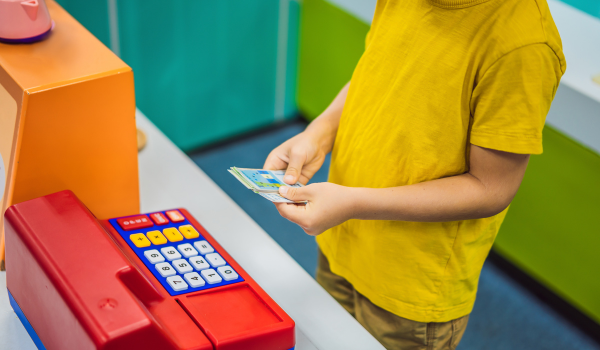Financial literacy is an essential skill that empowers individuals to make informed financial decisions, avoid debt traps, and plan for the future. Whether you’re a young student, a college graduate, or an adult managing household expenses, engaging in financial literacy activities can significantly improve your financial well-being.
In this article, we will explore various financial literacy activities tailored to different age groups, helping you build a strong foundation for financial success.
Why Financial Literacy Matters for Youth and Adults
Financial literacy is more than just understanding how to budget; it encompasses making informed financial choices, managing debt, investing wisely, and planning for long-term financial security. Many adults struggle with financial management because they were never taught these skills at a young age. By introducing financial literacy activities early, we can help future generations develop strong money management habits.
For youth, financial literacy ensures they understand the value of money, the importance of saving, and how to make wise spending choices. For adults, these skills are crucial for building wealth, reducing debt, and preparing for retirement. Engaging in financial literacy activities can bridge the knowledge gap and set individuals on a path toward financial independence.

Financial Literacy Activities for College Students
Budgeting and Expense Tracking Software
One of the most practical ways college students can develop financial literacy is by using budgeting and expense tracking software. This will help students manage their income, track expenses, and identify areas where they can save money. These tools allow students to:
- Set a monthly budget for essentials like rent, groceries, and transportation.
- Categorize expenses to track spending habits.
- Receive alerts for overspending and bill reminders.
Encouraging students to regularly use these tools can help them develop responsible financial habits early in life.
Peer-Led Financial Clubs and Organizations
College students can also benefit from peer-led financial literacy clubs and organizations. Many universities offer finance clubs that host workshops, invite guest speakers, and provide hands-on money management exercises. These clubs offer:
- Networking opportunities with finance professionals.
- Guidance on student loans, credit building, and investing.
- Financial challenges and competitions to make learning fun and engaging.
Students who actively participate in financial literacy groups often gain confidence in handling personal finances and making informed financial decisions.
Financial Literacy Activities for High School Students
Interactive Workshops and Simulations
High school students can benefit from interactive financial literacy workshops and simulations that mimic real-world financial scenarios. Activities such as:
- "Budgeting for Life" simulations, where students receive a salary and must allocate funds for rent, utilities, groceries, and entertainment.
- Stock market games, where students practice investing in simulated stocks to learn about risk and return.
- Debt management exercises, demonstrating the impact of credit card debt and interest rates on financial stability.
Real-World Case Studies
Using real-world case studies is another effective way to teach high school students about financial literacy. Teachers can introduce:
- Stories of young entrepreneurs who successfully manage their finances.
- Examples of poor financial decisions, such as high credit card debt and bankruptcy, to illustrate financial pitfalls.
- Analysis of personal budgets, helping students understand saving, investing, and debt repayment strategies.

Financial Literacy Activities for Middle School Students
Engaging Mobile Games and Apps for Early Learning
Middle school students can develop financial literacy skills through interactive mobile games and apps that make learning about money fun. These games introduce essential financial concepts in an engaging, stress-free way, helping young learners develop money management skills early.
Popular financial literacy games include:
- Financial Football (by Visa), which teaches budgeting and financial decision-making.
- The Payoff, a game designed by the Financial Consumer Agency of Canada to educate students about saving and investing.
- Savings Spree, an app that helps students understand the consequences of spending vs. saving.
School-Based Initiatives
Schools can introduce financial literacy programs as part of the curriculum to teach students about money management. Some effective school-based initiatives include:
- "Classroom Economy" projects, where students earn and manage classroom currency based on their participation and behavior.
- Partnerships with local credit unions to provide financial literacy workshops.
- Math lessons that incorporate financial problem-solving, such as calculating interest on loans and comparing savings account options.
These initiatives ensure that students receive structured financial education as part of their schooling experience.

Financial Literacy Activities for Elementary Students
Storytelling and Role-Playing Games
Young children learn best through storytelling and role-playing games, which can introduce financial literacy concepts in a fun and relatable way. Examples include:
- Books like "Bunny Money" by Rosemary Wells or "Alexander, Who Used to Be Rich Last Sunday" by Judith Viorst, which teach valuable lessons about money.
- Pretend play shops, where children use play money to buy and sell items, learning basic financial concepts like saving and spending.
- Allowance tracking charts, where kids record how they save and spend their allowance, encouraging financial responsibility.
By engaging in these activities, elementary students start building a foundational understanding of money management.
Parent-Child Financial Workshops
Financial literacy starts at home, and parent-child workshops can be a great way to teach kids about money. These workshops can include:
- "Save, Spend, Give" jars, where children divide their money into different categories.
- Grocery shopping challenges, teaching kids about budgeting and making smart spending choices.
- Bank visits, where children learn how savings accounts work and why saving money is important.
When parents take an active role in teaching financial literacy, children are more likely to develop responsible money habits.

Taking the First Step Toward Financial Empowerment
Setting Personal Finance Goals
Regardless of age, setting financial goals is the first step toward financial empowerment. Goals provide motivation and direction, ensuring individuals stay on track with their financial journey. Some effective goal-setting strategies include:
- Creating a savings plan for short-term and long-term needs.
- Setting up automatic deposits into a savings account.
- Tracking monthly expenses to identify spending habits and areas for improvement.
Financial literacy is a lifelong journey, and the earlier individuals start engaging in financial literacy activities, the better prepared they will be for the future.
Conclusion
Financial literacy is an essential life skill that benefits people of all ages. From budgeting apps for college students to role-playing games for elementary kids, engaging in age-appropriate financial literacy activities can boost money smarts and promote responsible financial habits.
By incorporating financial literacy into education, families, and everyday activities, we can create a future where individuals confidently manage their finances, make informed decisions, and achieve financial success. Start today by exploring some of the activities mentioned above and taking the first step toward financial empowerment!
Unlock Financial Freedom for Young Minds with True Youth Checking Accounts
Related Resources:

.jpg)